I’ve road tripped across Virginia more times than I can count, and it still surprises me. The mix of mountains, shore, and layered history creates a rhythm that never gets old. I want to share what truly shines and what can test your patience so you can plan smarter. If you love honest tips and real experiences from the road, you’ll want to keep reading.
1. A living history museum outdoors
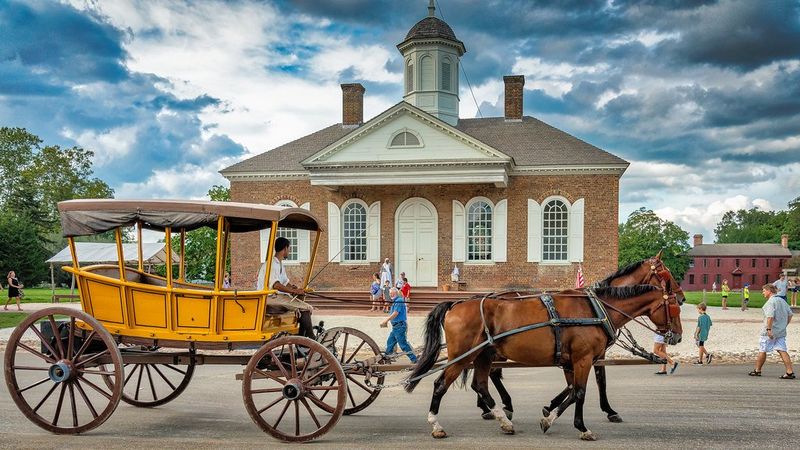
You step into American history wherever you go in Virginia. I walk the streets of Colonial Williamsburg, wander the earthworks at Jamestown, and tour Monticello with a sense of place I don’t find elsewhere. Interpreters explain daily life with careful research, and exhibits change often, so repeat visits reveal new angles. Battlefield landscapes at Manassas and Appomattox keep the story grounded in terrain and distance.
I follow wayfinding signs that make self-guided exploration easy and clear. I like booking ranger talks because they add context to the buildings and artifacts. I also check site calendars before I go since special programs fill fast. I bring comfortable shoes because the grounds stretch farther than they look on a map.
I stop at visitor centers for updated maps and accessible route details. These sites ask for patience and curiosity, and they reward both. When I leave, I carry more than dates and names. I carry street patterns, garden layouts, and the sound of gravel paths. That is how Virginia teaches history, outdoors and in context.
2. Scenic drives along Skyline Drive and the Blue Ridge

The ridge-top views along Skyline Drive feel like a reward every mile. I roll down the windows, stop at overlooks, and watch light shift across Shenandoah valleys. The road connects into the Blue Ridge Parkway, which keeps the pace slow and the scenery steady. I check the park service alerts for road work, wildlife activity, and seasonal closures.
I also bring extra water and layers, since elevation changes bring quick temperature swings. Trails start right off the road, so I pair short hikes with scenic stops. In fog, I slow down and use pullouts, because visibility drops fast and deer wander. Fall color draws crowds, but early morning starts help.
Spring wildflowers and bird calls make quieter months worth the trip. I keep a paper map in case cell service drops. These drives show why Virginia feels vast in a compact space. The road bends, the horizon stacks, and my schedule loosens. That’s when the mountains settle in and stay with me long after the engine cools.
3. Rich mix of landscapes in one state
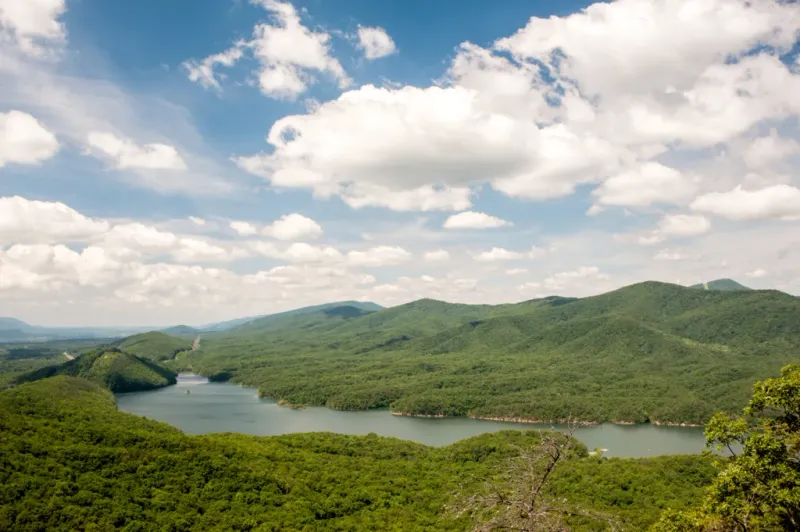
Mountains, valleys, tidal rivers, and sandy coastlines sit within a day’s reach in Virginia. I can watch sunrise over the Chesapeake Bay and finish with a sunset behind the Appalachians. The shift in habitats changes what I hear and smell, from gulls and salt grass to pine, oak, and laurel. I plan routes that cross regions so the trip never feels stuck in one mood.
Piedmont backroads pass farms and old courthouses with tidy greens. The coastal plain brings marsh halos and broad horizons that calm my eyes. In the mountains, cool coves and boulder fields reset the pace. I check tide charts if I want shore-side walks and river views.
I also scan park websites for trail conditions after heavy rain. The variety makes packing tricky, so I keep layers and a dry bag ready. That flexibility turns quick detours into small wins. The state rewards curiosity, and it keeps reminding me to look around the next bend.
4. Garden and estate culture
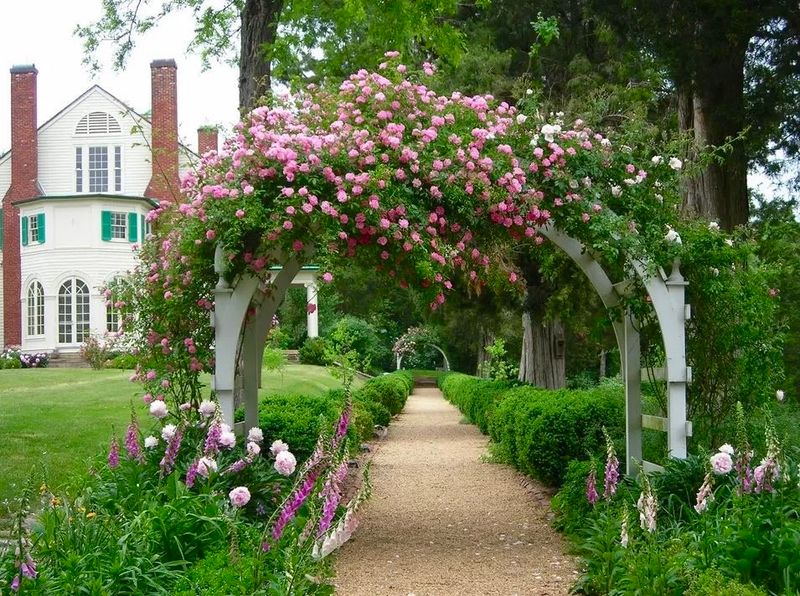
Virginia treats gardens as living archives. I wander formal parterres at historic homes, then step into experimental plantings at botanical sites. Each space links design to climate and history without feeling stuck in the past. I like reading plant lists because they reveal old-world influences and modern native choices. Some estates offer guided horticulture walks that explain pruning, soil strategies, and water use.
I time visits for shoulder seasons when blooms change and crowds thin. Boxwood lines, brick paths, and orchard rows frame quiet corners where I slow down. Docents often share notes on restoration work and storm recovery. Accessibility varies, so I check terrain details before I go. Photography rules can differ by site, and tripods sometimes need permits.
I also look for kitchen gardens that supply on-site cafes or education programs. These places show how design, climate, and care intersect across centuries. When I leave, I think less about grand facades and more about mulch lines, hedges, and the patience it takes to keep them thriving in Virginia’s weather.
5. Small towns with big personalities

Abingdon, Staunton, Floyd, and Lexington feel welcoming without losing their local pace. I plan a slow loop through each town and let side streets lead me. Galleries, folk music spots, and small theaters bring real community energy. Weekly markets reveal seasonal produce and regional crafts. I ask locals about live music nights and historic walking routes.
Murals and pocket parks add color between stops. I notice how architecture shifts from Victorian to early twentieth century storefronts. Some towns sit near rail trails or national forest gates, which makes day trips easy. Parking rules change by block, so I read signs closely.
I also check town calendars for festivals that can swell crowds. Morning walks help me see details before traffic picks up. These towns reward unhurried steps and casual conversations. When I leave, I carry a handful of stories and a short list of reasons to return. That’s the charm that keeps me exploring Virginia, one main street at a time.
6. Accessible wilderness and trails
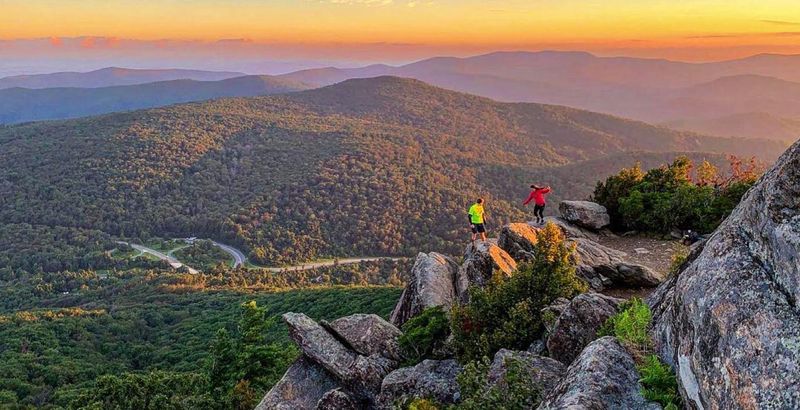
Virginia’s trail network gets you into the woods without demanding epic planning. I hop on segments of the Appalachian Trail for ridge vistas, then switch to state park paths with boardwalks and gentle grades. The mix lets families, new hikers, and seasoned backpackers share space. I check trail reports for blowdowns and seasonal closures.
Many parks post accessibility notes that include surfaces and slope details. I pack basic gear and a printed map when cell coverage fades. Water crossings can change after storms, so I carry dry socks and take my time. Trailheads near small towns help with snacks and supplies.
I also bring tick protection because forests and meadows stay active through warm months. Parking lots fill on sunny weekends, so early starts make sense. The payoff is huge for the effort. I get birdsong, mushrooms after rain, and clear night skies when I linger. Virginia makes wild places feel welcoming, which keeps me lacing up often.
7. Strong infrastructure for heritage tourism
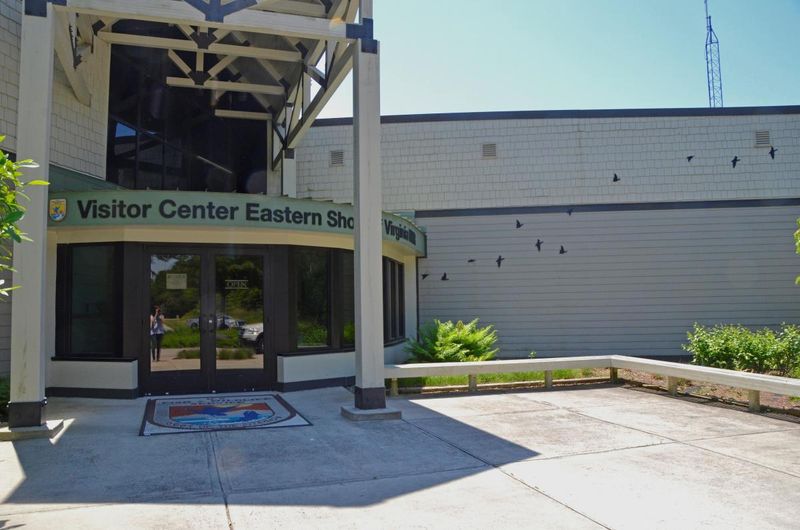
Heritage travel works here because the logistics feel sorted. I find consistent signage, reliable hours, and helpful staff across major sites. Visitor centers offer clear timelines, artifact highlights, and routes for different interests. Audio guides and ranger talks add layers without overwhelming newcomers. I like how brochures map nearby attractions so I can stack visits in a day.
Parking areas usually include accessible spaces and shaded spots. Restroom locations appear on maps, which saves time with kids. I also appreciate updates about preservation work so I know which rooms or trails might be closed. Shuttle services run at certain places during peak months and reduce traffic near sensitive areas.
I always check official websites for current alerts. The system helps me spend more time learning and less time guessing. That kind of reliability builds confidence for longer trips. It turns a long list of historic names into a clear, smooth itinerary that works across much of Virginia.
8. Caverns, canals, and curious detours
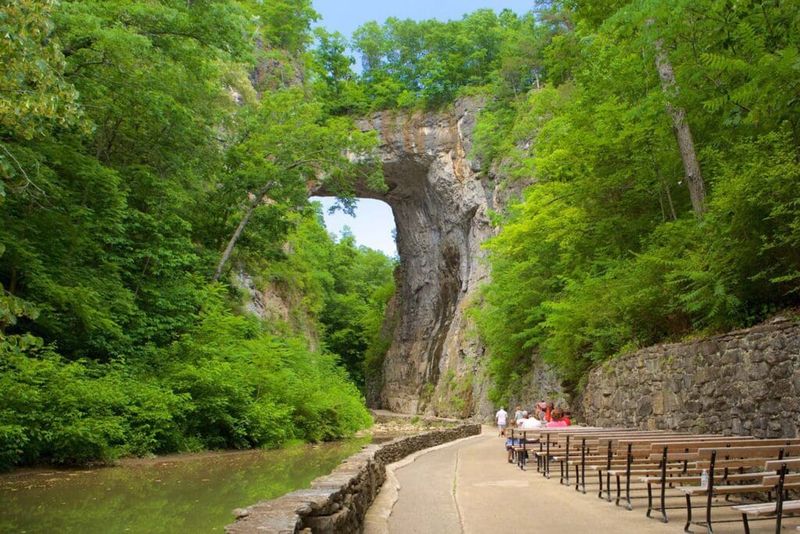
I like to mix headline sights with odd corners that surprise me. Luray Caverns brings soaring chambers and the famed organ that taps natural formations. Natural Bridge State Park adds scale and geology in one simple walk. In Richmond, the canal walk pairs murals with industrial history in a compact loop. Towpaths and locks tell stories of trade and water power.
I check safety notes for cavern stairs and humidity, then pack a light jacket even in warm months. Canal paths can be slick after rain, so I wear shoes with grip. I also time visits to avoid peak midday lines. These detours break up a trip and reset the senses.
The underground hush, the echo near a stone arch, the steady glide of canal water all slow me down. They remind me that Virginia has layers under our feet and beside busy streets. That mix of geology and engineering keeps my routes playful and fresh.
9. Coastal wildlife and quiet corners

Virginia’s shoreline stretches far beyond its famous boardwalks. I seek early morning beaches for shorebirds and low light. Refuge areas post clear rules to protect nesting sites, and I follow them. On the Eastern Shore, trails and overlooks reveal marsh life and slow tidal shifts.
I bring binoculars and a tide chart so I don’t miss feeding frenzies or low-water pools. Quiet corners do exist within driving distance of busy strips. Parking fills fast on nice days, so I arrive before sunrise. Wind can change comfort fast, so I pack a shell even in warm weather.
I watch for dolphins from piers and jetties when the water sits calm. If I want solitude, I pick weekdays and shoulder seasons. I leave no trace and respect closures, since these habitats work hard year-round. The coast rewards patience with clean horizons and textured light. It’s one of the reasons I return to Virginia again and again.
10. Tourist crowds clog historic districts
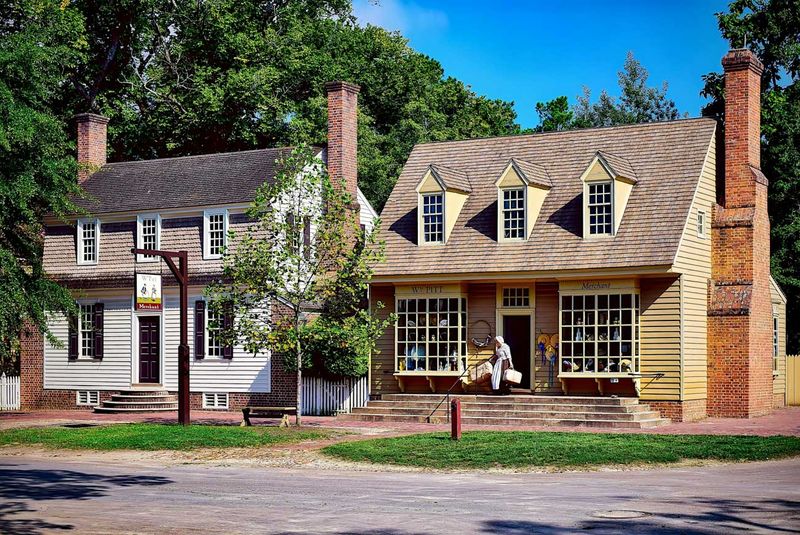
Peak times can turn charming streets into slow streams of people. I plan early starts for Williamsburg and similar districts, then take a midday break away from the core. Parking garages and lots fill quickly, which adds stress before the first stop. I study maps to find secondary entrances and lesser-known exhibits. Guided tours help me cut through decision fatigue, but I book ahead.
I also carry water and a hat because shade runs patchy on broad streets. During festivals and holidays, restaurant waits stretch, so I pack a backup snack. If crowds spike, I pivot to smaller museums or outdoor trails nearby.
Evening hours sometimes feel calmer and give softer light for photos. Patience and flexibility matter here. The history still shines, but it needs room to breathe. With a plan, I keep the mood steady and still enjoy the best parts of Virginia’s most famous districts.
11. Coastal and beach areas feel commercialized
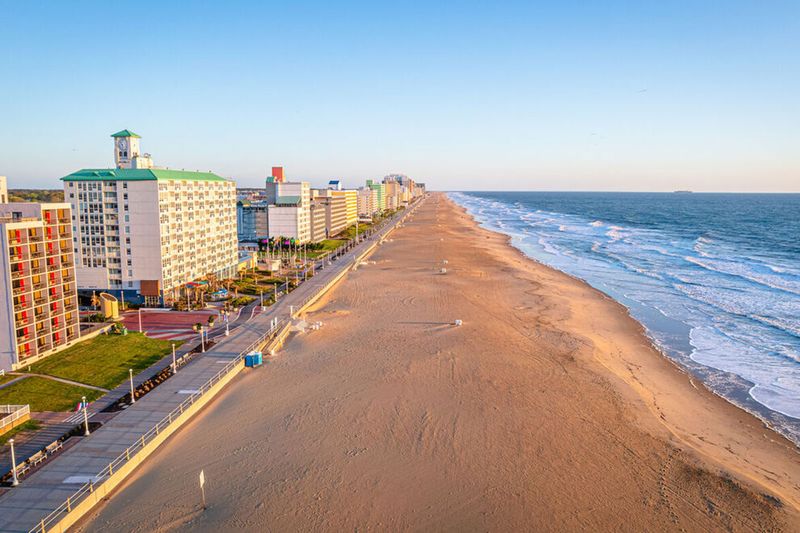
Some beach zones in Virginia feel built for volume. Long strips of shops, bright lights, and heavy traffic can drown out the sound of waves. I handle it by moving a few blocks inland, where neighborhoods slow down. Early mornings bring a calmer rhythm even in busy seasons.
I rent bikes to cover ground and seek quieter side paths. Public access points vary in amenities, so I check maps for restrooms and showers. I also look for nature trails near the shore to balance the scene. Parking rules shift by block and season, and fines add up, so I read signs carefully.
If the boardwalk feels loud, I treat it as a short stroll, then find dunes and wetlands for space. The coast can still feel wild if you time it right. With a flexible plan, I keep my beach days focused on sky, wind, and water.
12. Weather swings and seasonal limits
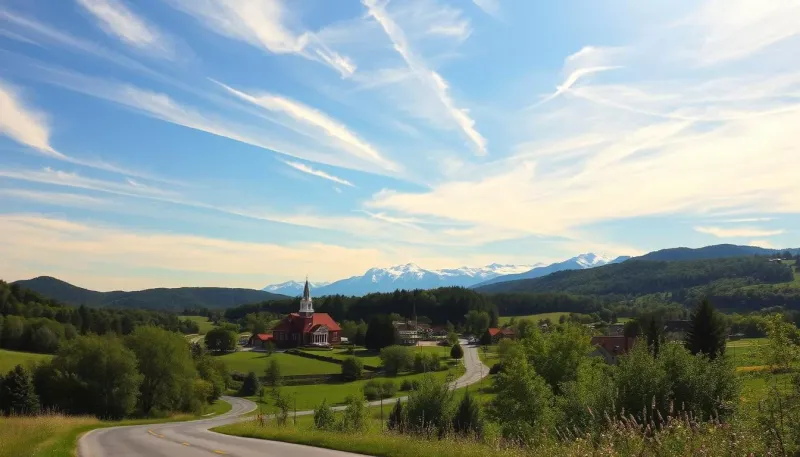
Virginia’s weather moves fast, and seasons shape access. Summer humidity slows hikes and makes midday walks tough. Off-season hours shrink at some attractions, which affects pacing. I track forecasts across elevations because mountain zones cool quickly and fog can roll in. I carry a light rain shell, a warm layer, and dry socks year-round.
Trail closures after storms pop up on park alerts, so I check before I drive. In shoulder months, I call ahead for hours and tour availability. Allergies can flare during heavy pollen, so I bring meds and follow local reports.
When conditions shift, I swap long hikes for short loops or museum time. That mindset keeps the trip moving without frustration. Planning buffers help me enjoy the calm after a squall or a bluebird day that follows. Virginia rewards travelers who respect the forecast and stay nimble.
Dear Reader: This page may contain affiliate links which may earn a commission if you click through and make a purchase. Our independent journalism is not influenced by any advertiser or commercial initiative unless it is clearly marked as sponsored content. As travel products change, please be sure to reconfirm all details and stay up to date with current events to ensure a safe and successful trip.